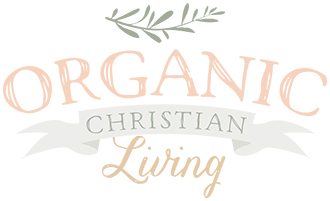Although I’d like to, sometimes it’s just not possible to buy everything organic. Most grocery stores simply don’t carry all the organic options I’m usually looking for. Most of the time, this causes me to go to several different stores in order to find all the organic ingredients I may need for that week. However, when I’m in a rush and don’t have time to make multiple stops, it’s good to know which fruits and vegetables tend to test low and high for pesticide residues. Knowing this information enables me to buy the safest non-organic produce when there is no other option. Every year, the Environmental Working Group (ewg.org) tests fruits and vegetables for their pesticide content and lists the most and least contaminated produce on their website; this list is referred to as “The Dirty Dozen” and “The Clean Fifteen.”
The Dirty Dozen lists the produce with the highest concentration of pesticides (try to avoid these), while The Clean Fifteen shows the produce that is least likely to hold pesticide residues (can buy non-organic). The two lists basically break down which fruits and vegetables are the most and least contaminated. By referencing these lists, I’m not only able to limit my exposure to pesticides, but also cut the amount of time and money I spend at the grocery store. Yay!
The Dirty Dozen
- Apples
- Peaches
- Nectarines
- Strawberries
- Grapes
- Celery
- Spinach
- Sweet Bell Peppers
- Cucumbers
- Cherry Tomatoes
- Snap Peas-Imported
- Potatoes
+Hot Peppers
+ Kale/Collard Geens
The Clean Fifteen
- Avocados
- Sweet Corn
- Pineapples
- Cabbage
- Sweet Peas (Frozen)
- Onions
- Asparagus
- Mangos
- Papayas
- Kiwi
- Eggplant
- Grapefruit
- Cantaloupe
- Cauliflower
- Sweet Potatoes
A Few Tips When Buying Non-Organic
- When you can, always wash and peel your fruits and vegetables to diminish the amount of pesticides you’re ingesting
- Cook your produce; this typically diminishes pesticide levels.
- If you can’t find fresh organic options take a look at the frozen aisle. Frozen organic fruits and vegetables tend to be less expensive.
Notes
- It’s important to point out that when the EWG conducts the tests to determine the pesticide residue load found on produce that the fruits and vegetables are washed or peeled. Therefore, it’s likely that unwashed/unpeeled produce may have higher concentrations of pesticide residue.
- Don’t skip fresh produce if you can’t find the options or can’t afford to buy everything organic; the best thing you can do for you body is to eat a high variety of fruits and vegetables.





3 Comments
Katie Leiler
November 18, 2016 at 8:55 pmI love this post! I’ve bookmarked it so I can refer back to the dirty dozen and clean fifteen lists 🙂 I always forget! Doctors have told me that’s what might have caused a lot of my food allergies, basically the GMO products that our body doesn’t like. I recently had a biohomonal analysis done and it was very interesting to see how all the toxins link to health issues. Awesome post! Thank you!
kristy
November 28, 2016 at 9:17 pmHi Katie!
Sorry for the late response! I always forget too! This is a good list to save in your photos on your phone, so you can always reach for it when in doubt! I’m sorry to hear that you have a lot of food allergies. Are there particular foods that you’re allergic too, or is it just the non organic options that affect your body in a negative way?
Katie Leiler
November 29, 2016 at 7:42 pmHi Kristy,
I will definitely save it in my phone since it’s always with me in the grocery store…it seems our phones are a fixed body part these days huh 😉 I did a blood test a long time ago and it determined that I was allergic to yeast, wheat, cow’s milk, goats milk, eggs, and a few other things. But yeast and dairy are the worst.